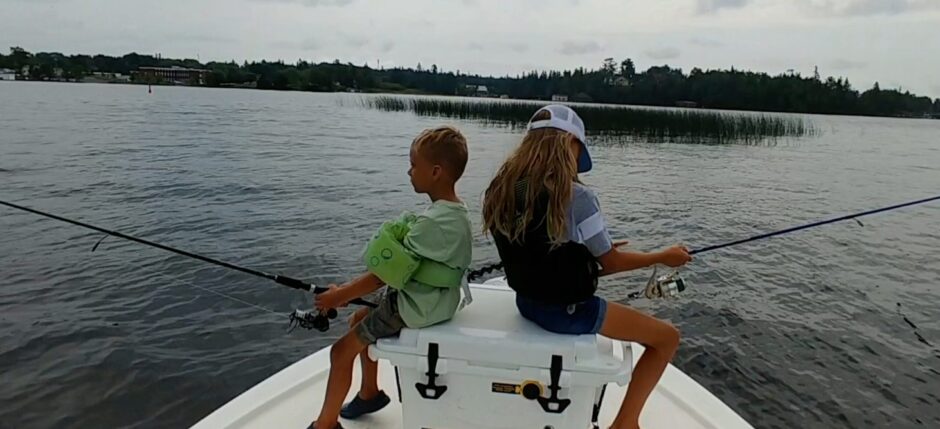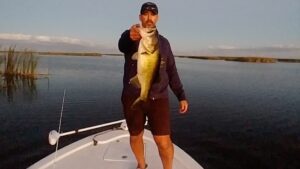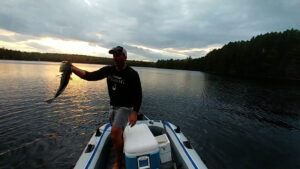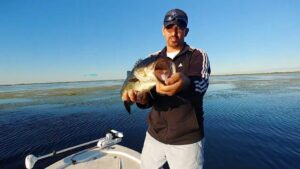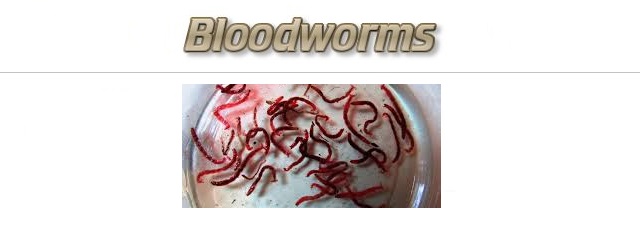
Bloodworms have a pinkish color as their pale skin allows their red body fluids to show through. They can be found on the bottoms of shallow marine waters. Bloodworms are poor swimmers, but they are very good at burrowing into the sand and silt bottoms. Bloodworms work well for bluefish, sea trout, striped bass, whiting, flounder, porgy and others.

Clam worms, often referred to as ragworms or sandworms, are reddish brown with 4 eyes, 2 sensory feelers and 8 tentacles. You can find clam worms at bait and tackle shops. Some of the species of fish that will eat a clam worm are flounder, sea trout, blackfish, striped bass, porgy, whiting, croakers, rockfish and surf perch.

Clams are great baits for saltwater fishing. Some anglers don’t like using them because it’s tough to keep them on the hook. If you are using fresh clams, the meat will stay on the hook better. Once clams die, the meat deteriorates quickly and it will be hard to keep the bait on the hook. Frozen clams can be effective, but the fresh clams do a better job of staying on the hook. Clams will catch many species including flounder, sea trout, blackfish, striped bass, porgy, whiting, rockfish and surf perch.

Crabs can be very effective for many different fish. Some fishermen know how to catch them by hand, but it is much easier to catch them with a fishing line and a fresh piece of chicken or even a chicken bone. Drop your chicken down and you will have no problem catching plenty of bait. Shallow bays, creeks, canals and marshes are the best places to find crabs. Hard-shell crabs and soft-shell crabs work well for a variety of species. Hard-shell crabs will catch tarpon and black drum. Soft-shell crabs are great for tarpon, black drum, snook, redfish and blackfish. Pieces of crab will work for many smaller fish.



Eels are hated by most fishermen. They can be a mess and they are hard to handle. However, eels can be an incredible bait, especially for targeting big fish. Eels in the 8 to 16 inch range seem to work best for bait, although fishermen have success with much larger eels. Some of the fish that eat eels are striped bass and tuna.

Sand fleas are the top bait among most surf anglers. The sand flea is not actually a crab, but it looks like a small crab and has many similarities. Sand fleas are often referred to as a mole crab. They can be caught all along the beach in the sand. As the wave recedes from the beach, look for v-shaped ripples in the sand. These are sand fleas that have dug into the sand. Dig them up by hand or with a sand flea rake. Pick up your sand fleas and put them into a container with some moist sand. If you submerge sand fleas in water, they will drown. Keep the container covered in hot weather. A damp cloth will work just fine. Now that you have your bait, set up a bottom rig with a diamond sinker, hook and a sand flea and you are ready to fish the surf. Sand fleas will catch a variety of species such as pompano, whiting, blackfish, redfish, striped bass, black drum, croakers and others.

Sand shrimp, also called ghost shrimp, are a popular bait for a variety of different fish. These shrimp live in the sand, so many anglers will actually catch them with a shrimp pump. The fish that you can catch with a regular shrimp will also eat a sand shrimp, so that’s almost everything inshore and several species of fish offshore too.
In freshwater, sand shrimp are a very popular bait for salmon and steelhead. When the fish enter the river to spawn, the sand shrimp is one of the better baits to use.

You can’t really go wrong with shrimp. Shrimp will always catch some type of saltwater fish. You can use live or dead shrimp and you can fish them with a jig or on the bottom with a pyramid sinker. With dead shrimp, cut the tail and head off and just use the meat portion of the shrimp. Live shrimp will work fished on the bottom, drifting and another method is to let a live shrimp swim freely with the incoming or outgoing tide. Just hook the shrimp in the back and use just enough weight to get it down. The shrimp doesn’t have to be on the bottom, but you don’t want it floating along the surface either. Some of the fish you will catch with shrimp are snook, permit, jack crevalle, bonefish, redfish and cobia. These are just a few as you can catch many other saltwater fish on shrimp.

Squid are very effective for a variety of inshore and offshore species. You can buy squid fresh or frozen at bait shops and fish markets. Using the whole squid will work for striped bass, bluefish and redfish. For most other species, a strip of squid will work just fine.
Atlantic Croaker
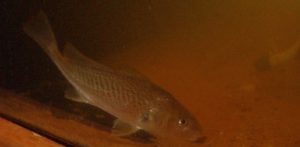
The Atlantic Croaker is a silvery-bodied fish with dark markings and tiny barbells. It is common in Atlantic waters south of Massachusetts. They are a great bait for still-fishing on the bottom or just above the bottom. Some species that like to eat Atlantic Croaker are grouper, striped bass, sea trout, bluefish, flounder and even shark.

Ballyhoo are frequently used as cut bait and for trolling by saltwater anglers. They can be found in bait shops along the east coast down to the northern part of the Gulf of Mexico. Ballyhoo are one of the top baits to use when trolling offshore. You can catch a variety of species such as sailfish, tuna, wahoo, dolphin and others. There are many pre-made rigs made for trolling ballyhoo. You can find them at your local bait and tackle shop.
Blue Runner
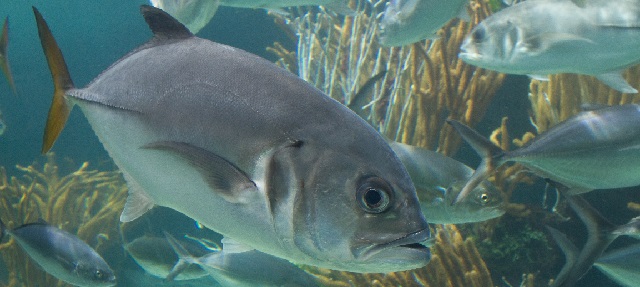
Blue runner are very fast and aggressive fish known for traveling in schools along the coastlines of the Atlantic Ocean. They are considered a game fish, but many anglers use blue runner as bait. Most of these bait fish will be 10 to 12 inches, which is a perfect size for catching bigger fish. They can be used for trolling and still fishing. Blue runner are good for trolling because they are fast swimmers. Just make sure to keep your trolling speed fast enough because blue runner can actually out swim the boat and tangle all of your lines.

Bull Minnows are fairly small, often the size of a finger, but they are extremely tough and resilient. These fish can survive low oxygen, hot & cold temperatures and they can be kept alive fairly easy in anglers’ minnow buckets. While bull minnows will catch a variety of saltwater fish, flounder are by far the most targeted fish that anglers target with bull minnows.

Cigar minnows are all “Round Scad”, Decapterus punctatus. They are typically between 6 to 9 inches long, but they can grow to 12 inches. It is common to catch them in cast nets or with sabiki rigs in similar areas that you find sardines or threadfin. They work well for trolling for a variety of species such as sailfish, barracuda, wahoo, king mackerel and bonito. Dead cigar minnows work well for grouper and snapper.

Glass minnows are anchovies. These minnows are small, usually no more than 3 inches long and they are transparent with a broad silver stripe down the side. They are tough to catch with cast nets, so most anglers end up buying them in frozen blocks to use as chum. Cut small pieces and throw them into the water. They are very effective when you are anchored, but they can also work with a slow troll.

Herring are a very common type of bait fish. There are many different types of herring and they can be found in fresh or salt water. While most herring are smaller, some can grow up to one and a half pounds. They are a common bait fish for many salt water species and they work well for fresh water striped bass.

Menhaden are common among anglers fishing the Atlantic coast and in the Gulf of Mexico. Bait and tackle shops sell fresh and frozen menhaden. Live menhaden are great baits for striped bass and bluefish. Dead menhaden works for many species such as striped bass, bluefish, redfish and sea trout.

Mullet are a very popular bait used for saltwater fishing, especially from the Carolinas down to Florida and into the Gulf of Mexico. Many anglers use cast nets to catch mullet for bait. They can be caught near shore or inshore. Mullet can also be purchased at local bait and tackle shops and they work well for a variety of fish such as redfish, snook, sea trout, striped bass, bluefish and tarpon. Most smaller fish can be caught with cut pieces of mullet.
Pigfish

Pigfish make a great bait for catching bottom fish as well as tarpon. Most anglers don’t catch a lot of pigfish at once, but when you do catch a few, put them in your bait bucket. Pigfish are best for still fishing or with a very slow drift. You can use them as cut bait too though, as most saltwater species of fish will eat some cut bait.

Pilchards, or sardines, are several types of small, oily fish related to herrings. Pilchards work well for a variety of game fish such as snook, redfish, kingfish, wahoo, snapper, tuna, trout, Spanish mackerel and many more fish.
Pinfish

Pinfish are one of the most common baits that are used in the sunshine state. They are so easy to catch and so many different species of fish will eat them.
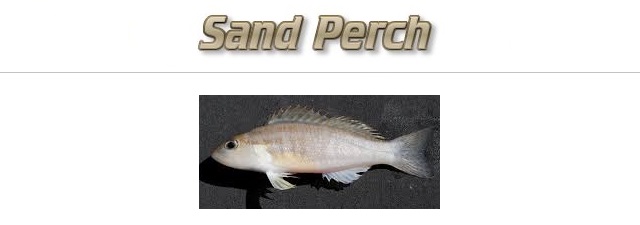
Sand perch are very colorful. They have blue cheek lines and orange throughout their body.
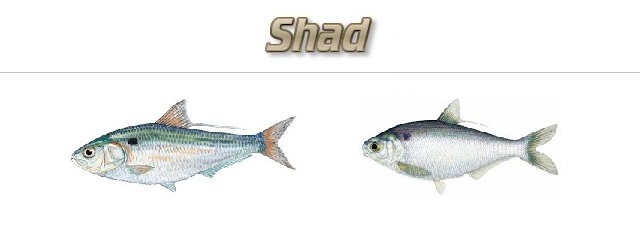
Shad are one of the most popular types of forage in many of the lakes throughout the country. There are many types of shad and some are even big enough to catch, but the shad we are talking about on this page are the types of shad that are bait fish for the game fish. Threadfin shad, like the one in the picture above, and gizzard shad are two of the more popular types of shad used as forage. Shad are typically stocked in lakes so game fish will have a healthy population of bait fish to snack on. Most game fish will eat shad, but they especially loved by largemouth bass and striped bass. There are many crankbaits on the market that look like a shad and they are very effective baits for a variety of species.
Silver Perch
Silver perch are not as popular as some of the other bait fish, but they can be productive baits for grouper, snapper and other bottom fish. Adult fish are usually around 6 to 8 inches long, but they can get up to around a foot long. They eat small fish and crustaceans. You can catch them similar to how you would catch pinfish. Tiny pieces of cut bait and shrimp will get the job done.
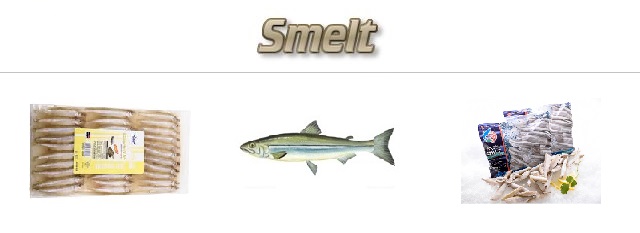
Smelt are one of the few fish that recreational anglers are allowed to net. Using dip nets, anglers will net smelt along the coastline, in streams and along the shorelines of the Great Lakes. Smelt are typically fried and eaten whole because they are so small.

Spanish sardines work great for many different species. Their body is slender with a bluish or greenish back, white belly and silver sides. Anglers love sardines because they are fairly easy to catch with a cast net or with sabiki rigs. You can use them dead or alive and they work well when trolled and fished on the bottom.

Spot are known for the croaking or drumming sound they produce by resonating their large swim bladder. These fish are often used as bait fish for many different species including striped bass, bluefish, sea trout, shark, tarpon and flounder. Most fish caught will be smaller than 9 inches, but bigger ones up to a foot are not uncommon.
Spot Tail Pinfish

Spot Tail Pinfish look similar to pinfish with the exception of a big, black spot near their tail. They are caught offshore while bottom fishing. If you catch some of these fish, send them back down there as bait. They will work for many species of bottom fish.

These fish have a very long thread-like fin. They are tougher to catch than other bait fish, however they can be caught with a cast net or sabiki rig. Threadfin herring are good bait for many different species, but they work best as cut bait for bottom fishing.
Tomtate

Tomtate are located on the bottom and they hang out in large schools. When you find a school of tomtate, they will find any small baits faster than other fish. You will end up bringing in one after another.
